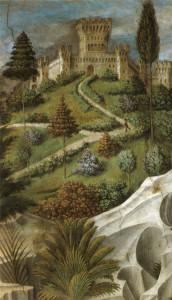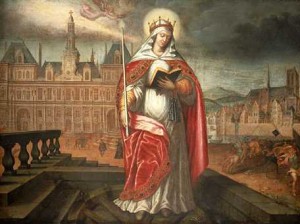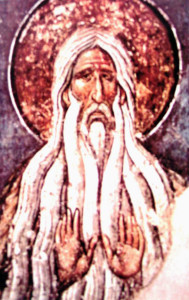TENTH DAY of CHRISTMAS:
St. Titus’s and St. Gregory’s Day
Again today, like yesterday, there are no particular customs associated with this, the Tenth Day of Christmas. It is the Feast Day of St. Titus and St. Gregory. Titus was a disciple of St. Paul in the first century, and St. Gregory was a bishop in the sixth century. It’s also St. Rigobert’s Day and St. Ramon’s Day. But not much is done to celebrate these good guys, and in this house, the Tenth Day of Christmas is typically a day of preparation for the bigger festivities that come next over the two days that follow: Twelfth Night and Epiphany, the celebrations that close the Christmas season.
The celebration of Epiphany on January 6 rivals that of Christmas Day in some countries. It’s the big day for gift giving, and we see the last of the wintertime gift bearers in Italy with la befana and throughout Spain and Latin America, the three kings themselves bringing presents. As for Twelfth Night, well, this is a celebration that has fallen a bit out of favor here in the States, and this is too bad. We think of Twelfth Night and Epiphany as a proper close to the Christmas season. For those of you who feel a bit let down after Christmas, these are especially important celebrations, for they help give Christmas its full life and scope.
Last year I shared with you a recipe for one of the Epiphany traditions in our house: Three Kings Cakes. I’ll share it with you again today, for if you bake them today or tomorrow morning, they’ll be ready in plenty of time for Twelfth Night or for Epiphany. You will need three loaf pans because the recipe yields three cakes, one for each of the Magi: Caspar, Melchior, and Balthasar. The Magi will arrive on the Sixth of January, just in time for these delightful cakes that are flavored with honey and rose water, flavors of the ancient Mediterranean world, flavors they certainly knew well in their day.
*
THREE KINGS CAKES
makes three cakes
For the Batter
1 cup butter
generous 3/4 cup sugar
2 eggs
2 teaspoons vanilla
2 1/2 cups currants
3 cups applesauce
1/2 teaspoon salt
1 tablespoon baking soda
1 teaspoon cinnamon
1/2 teaspoon ground cloves
4 cups flour
Preheat oven to 300 degrees. Cream together the butter and the sugar, then add the eggs and vanilla. Beat smooth before adding the remaining ingredients. Grease 3 loaf pans (about 8″ x 4″ x 3″ or so) and divide the batter amongst the pans. Bake for one hour, or until a toothpick poked into the center of each cake comes out dry. Let the cakes cool in their pans on a rack.
For the Syrup
1/2 cup honey
1/2 cup sugar
1/2 cup water
1 cinnamon stick
6 whole cloves
2 tablespoons rose water
Once the cakes are baked, combine the syrup ingredients, except for the rose water, in a saucepan over medium heat. Once the sugar dissolves, add the rose water. Remove the cinnamon stick and the cloves and then pour the hot syrup over the cakes in their pans, divided equally amongst the three cakes. The syrup will soak into the cakes. Allow to cool completely before unmolding from the pans. Serving the three cakes on three platters makes for a nice presentation on Epiphany Day or on Twelfth Night.
If you have trouble finding good rose water, we happen to sell an excellent one at our website, in the Inspired Living for Everyday pages of our online catalog. Our rose water is made by the Sabbathday Lake Shaker Community in Maine, from their line of culinary herbs and herbal teas that we’ve been selling at conviviobookworks.com for years now. It’s one of the most delightful flavorings you’ll bake with, adding a mysterious and delicate flavor not just to these cakes, but also to apple pie, cookies, and even French toast. It’s pretty wonderful stuff.
Christmas, meanwhile, is soon coming to a close. Somewhere on the horizon there are three old men following that star, nearing their destination, and in Italy, la befana is at her cleaning; she has her broom in hand, and she’s preparing to sweep away the festivities.
Image: Detail from a fresco by Benozzo Gozzoli in the Cappella dei Magi (Chapel of the Magi) at the Palazzo Medici Riccardi in Florence, Italy, 15th century. [Public domain] via Wikimedia Commons.


